Related Research Articles

The 1st Canadian Army Tank Brigade, later known as 1st Canadian Armoured Brigade, was an armoured brigade of the Canadian Army, raised during the Second World War. The brigade was composed of the 11th, 12th and 14th Canadian Armoured regiments and saw service in the Italian campaign and later in north-west Europe. It was one of only two independent Canadian armoured brigades in combat, the other being 2nd Canadian Armoured Brigade.

1 Service Battalion is a deployable field unit of the Canadian Forces. It provides second- and limited third-line combat service support to units throughout the 3rd Canadian Division. Located at Steele Barracks, Canadian Forces Base Edmonton, 1 Svc Bn is composed of the battalion headquarters and four functional companies: Transportation, Supply, Maintenance, and Administration. Administration Company is distinct in that it provides first-line support to the battalion itself, while the remaining companies provide second- and limited third-line support to units across the 3rd Canadian Division.

The Corps of Royal Canadian Electrical and Mechanical Engineers (RCEME) is a personnel branch of the Canadian Armed Forces (CF) that provides army engineering maintenance support. All members of the corps wear army uniform. From the 1980s to 2013 it was called the Electrical and Mechanical Engineering Branch.
A service battalion is a unit of the Canadian Armed Forces (CAF) that provides combat service support to a brigade group and its elements.

The Royal Canadian Army Service Corps (RCASC) was an administrative and transport corps of the Canadian Army. The Canadian Army Service Corps was established in the Non-Permanent Active Militia in 1901 and in the Permanent Active Militia in 1903. The Canadian Permanent Army Service Corps was redesignated The Royal Canadian Army Service Corps on 3 Nov 1919.

The Royal Canadian Ordnance Corps was an administrative corps of the Canadian Army. The Royal Canadian Ordnance Corps RCOC can trace its roots back to the Canadian Stores Department. Formed in 1871, the Canadian Stores Department was a civil department of the Canadian Government. This civil service was charged with control of forts, ammunition, stores, buildings and an ordnance depot left by the departing British Military.

The Royal Australian Army Ordnance Corps (RAAOC) is the Corps within the Australian Army concerned with supply and administration, as well as the demolition and disposal of explosives and salvage of battle-damaged equipment. The Corps contains clerks, operator supplies, petroleum operators, parachute riggers and ammunition technicians. Members of the Corps are nicknamed Roaches.

The 43rd Sustainment Brigade was re-designated the 4th Infantry Division Sustainment Brigade, 4th Infantry Division effective 9 July 2015. a U.S. Army Forces Command (FORSCOM) combat service support unit stationed at Fort Carson, Colorado. The Brigade motto is "Provide with Pride". The Brigade call sign is "Rough Riders". The 43rd Sustainment Brigade has deployed overseas to Somalia, Cuba, Kuwait, Saudi Arabia, Iraq, and Afghanistan. On 9 July 2015 the 43rd Sustainment Brigade was inactivated. Subordinate units were reassigned to the 4th Infantry Division Sustainment Brigade.

31 Service Battalion is a combat service support unit of The Canadian Army Reserve in 31 Canadian Brigade. The unit was formed in 2010 when 21 (Windsor) Service Battalion, 22 (London) Service Battalion, 23 (Hamilton) Service Battalion and elements of Area Support Unit London were merged into one formation.

41 Canadian Brigade Group is a Canadian Army formation of the 3rd Canadian Division. The formation is composed of Army Reserve units within the province of Alberta and the Northwest Territories. The headquarters of the brigade is in Calgary.
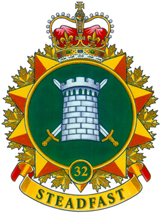
32 Canadian Brigade Group (32CBG) of the Canadian Army is part of the 4th Canadian Division. It is centred on the Greater Toronto Area, as well as Niagara Region and Brantford. It is headquartered at LCol George Taylor Denison III Armoury in Toronto, Ontario.
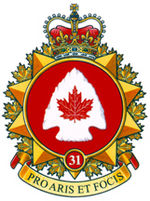
31 Canadian Brigade Group is part of the 4th Canadian Division, under the Canadian Army. It encompasses the southwestern portion of Ontario, and is headquartered in London, Ontario. The 31 CBG area of responsibility stretches from Hamilton to Windsor. The brigade has approximately 2,400 soldiers. Colonel Chris Brown, CD is Commander of 31 Canadian Brigade Group. The brigade sergeant-major is Chief Warrant Officer Mike Coit, CD.
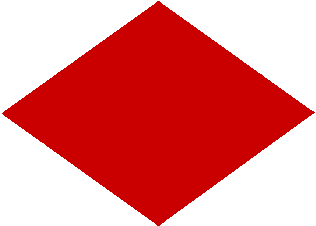
I Canadian Corps was one of the two corps fielded by the Canadian Army during the Second World War.
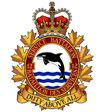
12 (Vancouver) Service Company is a Canadian Army Primary Reserve combat service support subunit of the Canadian Forces that can fight in a defensive role and provides logistical support to the units within 3rd Canadian Division's 39 Canadian Brigade Group, which consists of all Primary Reserve units in British Columbia.

The 267th Chemical Company was a military unit of the U.S. Army Chemical Corps responsible for the surety of chemical warfare agents dubbed "RED HAT" deployed to the Islands of Okinawa, Japan and subsequently Johnston Atoll in the Pacific Ocean. A recently discovered Army document reveals that the true mission of the 267th Chemical Company was the operation of the Okinawa deployment site as part Project 112. Project 112 was a 1960s biological warfare field test program that was conducted by the Deseret Test Center. Okinawa is not listed as a test site under Project 112 by the U.S. Department of Defense.
From four Stores Depots in the main centres of New Zealand at the beginning of the 20th century, the Royal New Zealand Army Ordnance Corps (RNZAOC) expanded and shrank to meet the operational needs of the NZ Army, Ordnance units have been deployed worldwide and across the breath and width of New Zealand.

33 Service Battalion is a Canadian Forces Primary Reserve unit with three companies located in northern and eastern Ontario - at the M.L. Troy Armoury in North Bay, Pine Street Armoury in Sault Ste Marie, and the Major Holland Armoury in Ottawa. The battalion is under command of 33 Canadian Brigade Group, itself commanded by the 4th Canadian Division. The battalion is made up of officers and soldiers primarily from the Royal Canadian Logistics Service and the Royal Canadian Electrical and Mechanical Engineers providing Combat Service Support to 33 Canadian Brigade Group and other military organizations in eastern and northern Ontario - by means of transportation, supply, administration, food services, and mechanical repair and recovery activities.
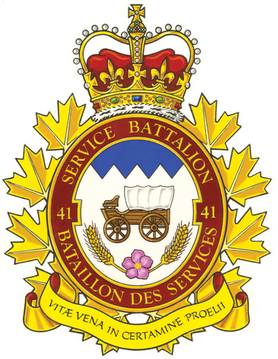
41 Service Battalion is a Canadian Army Primary Reserve combat service support unit with three companies at Currie Armoury in Calgary and at Debney Armoury in Edmonton, Alberta. The battalion is under the command of 41 Canadian Brigade Group, itself part of the 3rd Canadian Division, one of four region-based Canadian Army divisions. The battalion is made up of officers and soldiers primarily from the Corps of Royal Canadian Electrical and Mechanical Engineers and the Royal Canadian Logistics Service and provides transport, maintenance, supply, food services and administrative support to 41 Canadian Brigade Group and other military elements in Alberta.
This article represents the structure of the Irish Defence Forces as of May 2020:

32 Service Battalion is a reserve combat service support (CSS) unit within the Canadian Army. The unit is formed under command of 32 Canadian Brigade Group in the 4th Canadian Division. The Service Battalion is composed of soldiers from the Corps of Royal Canadian Electrical and Mechanical Engineers and Royal Canadian Logistics Service to include: vehicle technicians, weapons technicians, cooks, financial service administrators, human resource administrators, material management technicians and mobile support equipment operators. It is located at LCol George Taylor Denison III Armoury in Toronto, Ontario.
References
- ↑ "Service Battalion", http://www.army-armee.forces.gc.ca/en/5-bataillon-service/index.page?
- ↑ Arnold Warren, Wait for the Waggon. The Story of the Royal Canadian Army Service Corps. McClelland and Steward Limited, 1961.
- 1 2 Warren, Wait for the Waggon.
- ↑ William F. Rannie, To the Thunderer, His Arms The Royal Canadian Ordnance Corps, W.F. Rannie Publisher, Lincoln, ON.
- 1 2 Rannie, To the Thunderer, His Arms.
- ↑ Colonel Murray Johnston, Canada's Craftsmen. The History of the RCEME Corps, 1983.